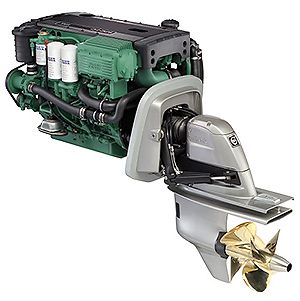Stern Drive manufacturers recommend inspection and servicing at 6 month intervals. It may sound like overkill, however we highly recommend that you adhere to the manufacturer's advice.
We often see families and friends arrive at the Marina on the weekend all in good spirits, eskies full of ice, bags full of picnic items, ready for a day out on the water. It is amazing how often the owners who neglect their stern drive servicing have to abort the excursion because the leg overheats and fails, or propellers are fouled and the boat simply won't move, and suffer the embarrassment in front of family and friends.
Owners who adhere to the recommended servicing schedule rarely if ever are let down by the engine and stern drive.

Stern Drives have Several Drawbacks
- They have many moving parts. The antifouling will always crack at these moving parts; growth will be prolific and spread to the leg as a whole quite quickly. The "bellows" is a flexible rubber boot which moves, sharp barnacles & mussels will grow on the bellows and if not cleaned regularly, these will actually cut the rubber when the stern drive is trimmed up or down, this will allow water into the gimbal bearing where it will rust and seize in very short order.
- When the stern drive is in operation at planing speeds, the body of the unit is actually out of the water and can become quite warm, even at normal operating temperature. This heating of the stern drive and the rapid cooling when off the plane and immersed in the cooler sea water certainly affects the qualities and the effectiveness of the antifoul.
- Stern Drives are predominantly made from aluminium. Aluminium is prone to galvanic action when constantly immersed in salt water. To all but eliminate this form of corrosion, the anodes on the leg should be inspected and replaced as required at 6 monthly intervals. Without correct anode protection you will experience heavy and expensive corrosion of the leg itself, and the propellers.
- Stern Drives should be left trimmed "down" when not in use to avoid barnacles growing on the trim rams, which should not be antifouled.
- The salt water cooling intakes are quite small, these become very quickly blocked with weed and shell growth leading to overheating. The shell and weed will also grow up inside the leg (not visible externally), these block the cooling circuit which also leads to overheating.
